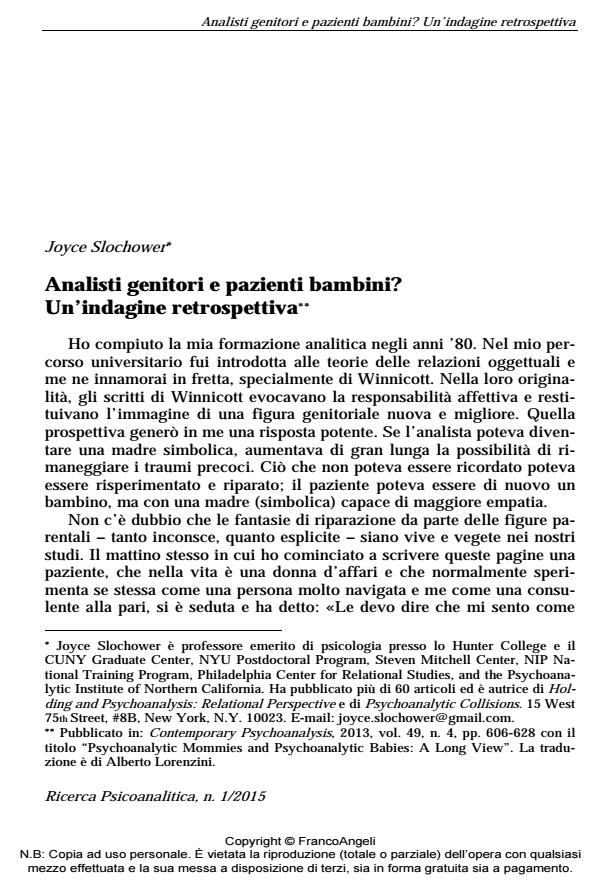Psychoanalytic mommies and psychoanalytic babies: a long view
Journal title RICERCA PSICOANALITICA
Author/s Joyce Slochower
Publishing Year 2015 Issue 2015/1
Language Italian Pages 24 P. 9-32 File size 127 KB
DOI 10.3280/RPR2015-001002
DOI is like a bar code for intellectual property: to have more infomation
click here
Below, you can see the article first page
If you want to buy this article in PDF format, you can do it, following the instructions to buy download credits

FrancoAngeli is member of Publishers International Linking Association, Inc (PILA), a not-for-profit association which run the CrossRef service enabling links to and from online scholarly content.
I offer a retrospective view of the evolving baby metaphor in relational thinking. Early relational critiques of developmental tilt models and the concept of holding in clinical work, amplified by feminist writers, sharply skewed relationalists toward a vision of the patient-as-adult and a view of the analytic dialogue as inherently intersubjective. Bringing my own Winnicottian/relational perspective to this critique, I expanded the notion of holding and proposed a way to bridge Winnicottian holding with a relational perspective by exploring the analyst’s participation in establishing and maintaining a holding experience. Here, I review and update this controversy, offering new ideas about holding’s clinical function in buffering shame states.
Keywords: Developmental tilt, Winnicott, Relational theory, holding, intersubjectivity, patient as baby
Joyce Slochower, Analisti genitori e pazienti bambini? Un’indagine retrospettiva in "RICERCA PSICOANALITICA" 1/2015, pp 9-32, DOI: 10.3280/RPR2015-001002